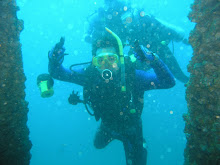The human body is somewhat like that perfect bowl of porridge in "Goldilocks and the Three Bears." It's not too hot, not too cold, but just right.
Our bodies maintain internal body temperatures that allow our insides to keep on cooking without burning up or slowing down -- usually around 98.6 degrees Fahrenheit (37 degrees Celsius). There's even a part of our brain called the hypothalamus that regulates this internal heat to keep everything running smoothly
But when that core temperature of major organs drops down to 95 degrees or lower, it is called hypothermia. Just like when you have a high fever, hypothermia can slow your body and possibly lead to death.
When it comes to our bodies, a lot depends on heat. Heat is the byproduct of biochemical reactions within our bodies. The food and beverages we consume are just like the wood and kindling that make a fire. Our bodies gain energy from food, and that energy pumps our hearts, grows our hair and helps our digestive system break that food down into usable units. This process is called metabolism.
Think about all of the internal processes that take place when you run. It requires energy to move so many parts of your body at the same time. When all those parts crank up, we burn up energy, producing heat.
In the cold, our bodies strive to retain as much heat, or energy, as possible. In many parts of the body, blood vessels in our skin tissue constrict, or tighten up. This tightening helps keeps blood away from the cold outer layer of the body and helps circulate warmer blood to our core areas. This tightening is also why you may feel stiff after being in the cold for a long time.
However, areas with large blood vessels, particularly around the head, neck, chest and groin, are more susceptible to heat loss because those blood vessels don't constrict as effectively as the smaller ones near the skin. That's why proper winter attire includes a hat, scarf and coat.With all of these internal actions and reactions taking place within the body, what can we do to protect our core temperature and defend ourselves from hypothermia?
How to Avoid Death from Hypothermia
Nearly 700 people in the United States die each year from hypothermia [source: Mayo Clinic]. Hypothermia is a silent killer because once your body temperature drops below 95 degrees, you lose awareness of the cold and become disoriented because less oxygen reaches the brain. For that reason, take special precautions if you're alone in the cold. You may not be aware that your body is in peril.
Hypothermia Risk GroupsInfants and the elderly are the most at risk for developing hypothermia. Babies do not preserve body heat as well as adults, and the elderly may not have a high enough metabolism to stay warm. For both, it is important that their bedrooms not be too cold and that they are regularly monitored during the winter.
Groups of people should look after each other for the signs of hypothermia discussed in the previous section. If someone does appear hypothermic, there are a number of things that you can do to prevent that person from dying. In mild to moderate cases, the body can re-warm at a rate of 3.6 degrees per hour.
To start that warming process, first move into shelter. If there is nowhere to go indoors, at least move the person out of the wind, since wind can speed up hypothermia. Remove any wet clothing and replace them with dry blankets or even newspaper.
Getty ImagesNavy Seals huddle for warmth during training. Removing clothes and sharing body heat can keep people warm.
For people with mild or moderate hypothermia, some food and beverages may be helpful. Warm, sweet liquids, such as diluted gelatin mix or hot chocolate will give the body quick energy boosts to help it produce heat. Proteins, fats and carbohydrates in the form of trail mix and granola can also stimulate the metabolism. Do not give them alcohol or caffeine.
In more severe cases, getting a person out of any wet clothes and into a hypothermic wrap is essential. There should be several layers of insulation between the wrap and the cold ground. A hypothermic wrap covers every part of the body with as few open spaces as possible. A sleeping bag or multiple blankets can serve as hypothermic wraps, as long as the person is completely protected from the cold.
Additionally, extra clothing or blankets should be applied to the neck, groin, armpits and chest to protect major arteries. Sharing body heat by removing your clothes and getting into the wrap with the person may also prove beneficial, except in very severe cases. Also, do not apply heat directly to the skin or give the person a massage because it can circulate the colder blood near the skin to the core, shocking the body.
Johner/Getty ImagesHypothermic wraps cover people's bodies entirely while being insulated from cold ground.
CPR is another option if a hypothermic person's skin has turned blue, and you can't feel a pulse. But only do this if you are properly trained. If you stimulate the body too much with CPR, it can overexcite the heart and lead to cardiac arrest.
If possible, call 911 to get someone with severe hypothermia to a hospital. A doctor may hook up a person with hypothermia to an IV to put warming fluids directly into the body. He or she may also perform a procedure called hemodialysis, which takes the patient's blood out of the body, runs it through a warming mechanism, and returns it.
Langganan:
Posting Komentar (Atom)

Tidak ada komentar:
Posting Komentar